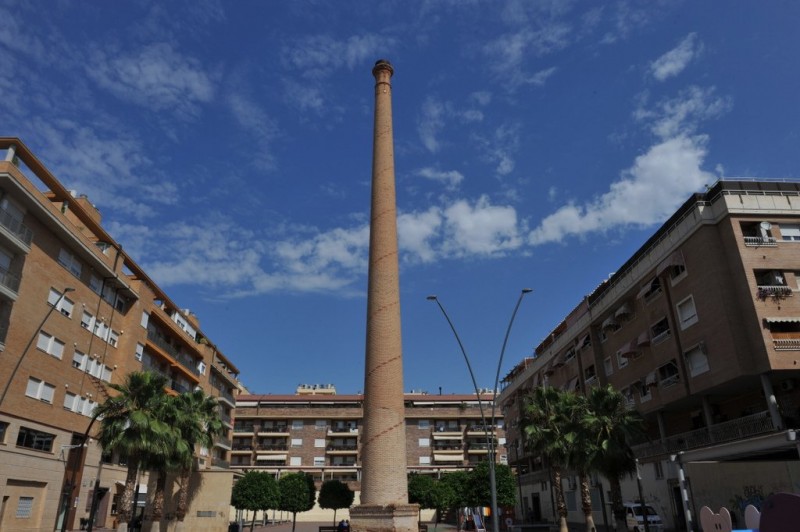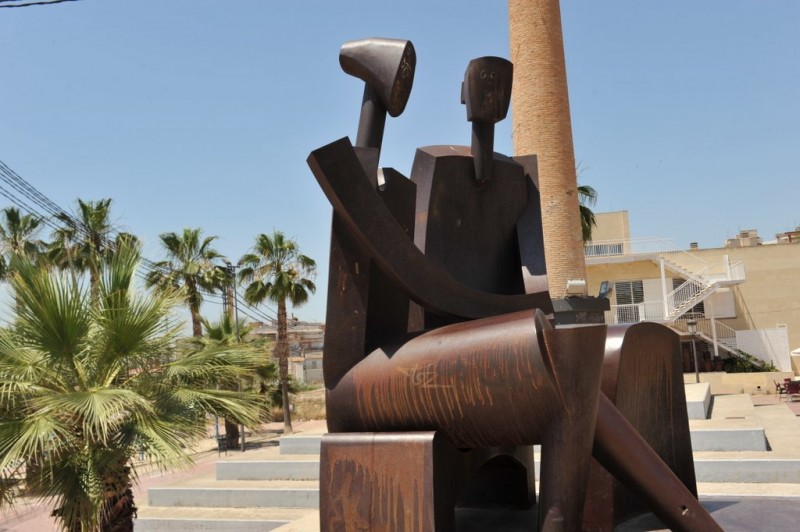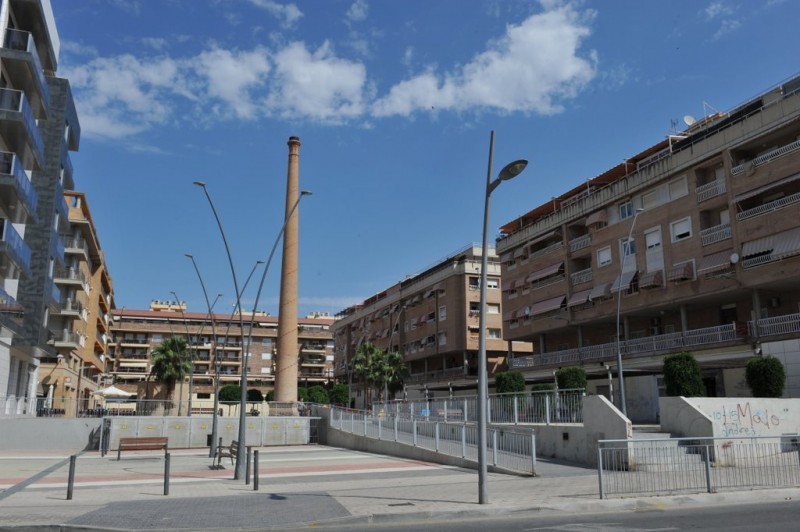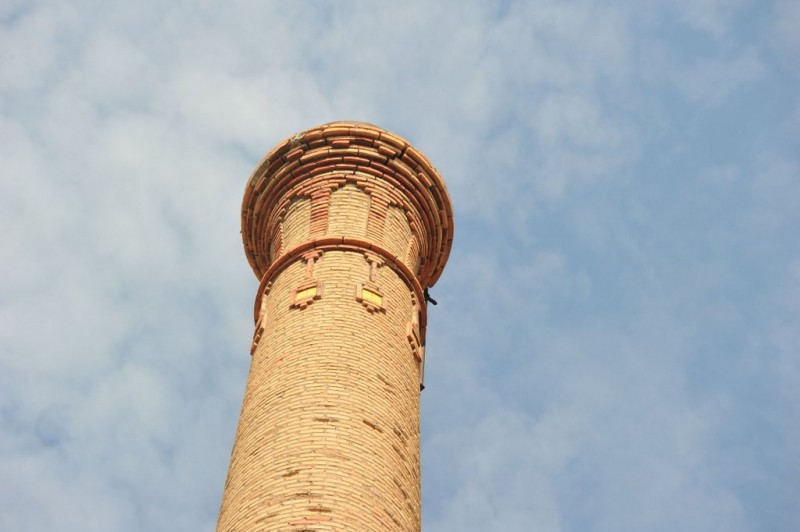The industrial chimneys of Molina de Segura
Monuments to the industrial past of Molina are dotted around the town centre

During the late 19th and early 20th century Molina de Segura became one of the leading locations in Spain for the production of canned fruit and vegetables, bringing about the rapid growth of the town’s economy and population.
However, by the 1990s the prosperity of the sector was on the wane, and this, combined with the location of many of the main companies near the centre, led to the buildings they occupied being torn down to make way for more modern business and residential development (or, in some cases, for the land they occupied to become public parks or squares). In various instances only the large chimneys of the old factories were left standing, and now there are seven of these structures dotted around the town centre, serving as reminders of what used to be the backbone of the local economy for approximately a century.
Five of these chimneys used to form part of old canning plants, while the other two belonged to other industrial concerns dealing with ceramics and the manufacture of bricks.

The Prieto factory chimney in the Barrio de San Roque: this structure stands between the N-301 road and the Avenida de la Industria, next to the park of Jardín del Huerto Fayrén, and dates from the early 20th century. Simple in structure, it features some brickwork decoration at the top of the plinth.
The old Pelícano factory chimney: this stands just to the north of the Jardín del Huerto Fayren, on the patch of ground which is sometimes used as the fairground. This land is mostly empty following the removal of the Pelicano canned products factory, except for the chimney which was built in the early to mid-20th century. Some decorative brickwork is featured at various levels.
The Maximino Moreno chimney: the chimney of Maximino Moreno is located next to the remains of the old defensive wall of Molina, between Calle Ibn Arabí and Calle San Ignacio. It was restored in 2011 to coincide with the construction of the MUdEM museum, and it is still possible to see the entrance at the base of the structure which was used to allow maintenance staff to clean it.
The name of the old factory is written in decorative brickwork, and the old lightning conductor still stands on the top.

The Hernández Pérez (or La Molinera) chimney: this used to belong to the La Molinera factory, but is now in a plaza near the town centre which was created when the factory was demolished, and it is the most ornate of those which survive in Molina de Segura. These days it is surrounded on three sides by modern apartment blocks, having first been built in the first half of the 20th century.
The Industrias Prieto chimney in Fátima: the chimney, which was built in the middle of the 20th century, stands next to the Subirana irrigation ditch, and features ornate decoration at the top of the base, while at the top is a chequered pattern reminiscent of a chess-board design. It is possible to go inside the chimney and see the ducts which were used to divert smoke and fumes.
Chimenea de la Cerámica: also known as the Coresa chimney, it is located at the entrance into Molina de Segura from the city of Murcia on the N-301, and used to belong to a brick and ceramics factory. Dating from the early 20th century, it features scarcely any decoration.

Chimney in the Plaza de la Cerámica: this is another structure which in the past used to belong to a brick and ceramics factory, and is now located in the public park of Plaza de la Cerámica. It is very similar to the Molinera chimney, and may be the work of the same architect and builders.
From time to time the tourist office runs guided tours visiting these former industrial installations. See the feed below for current tours.
Click for full information about the Molina de Segura municipality in English





